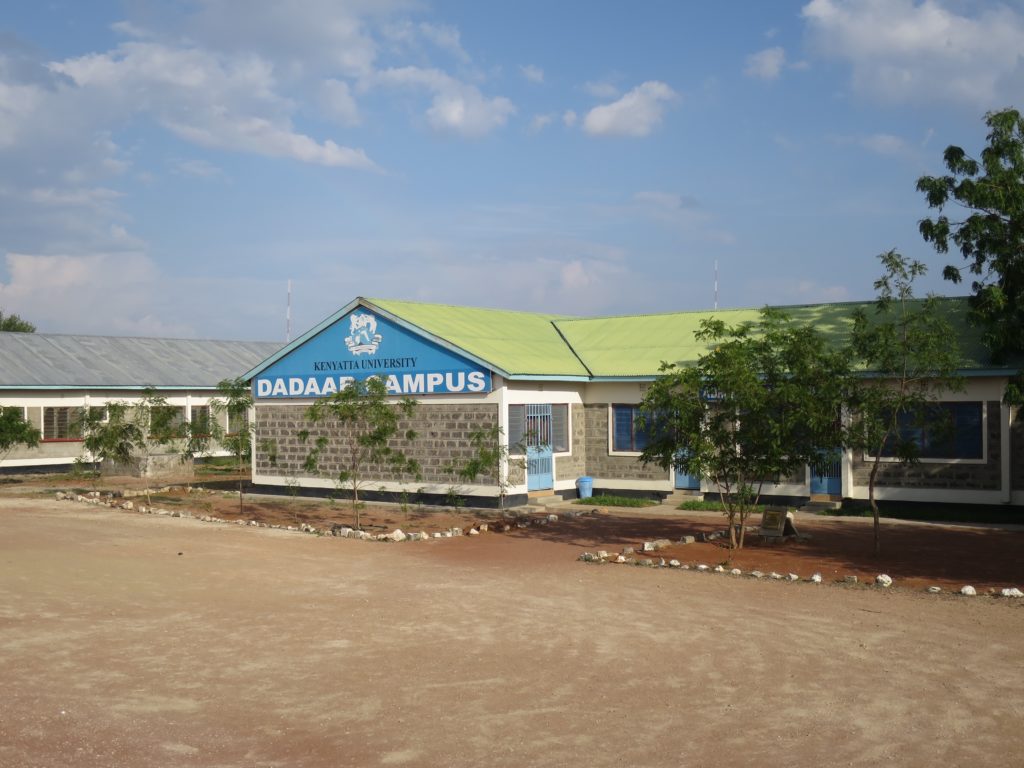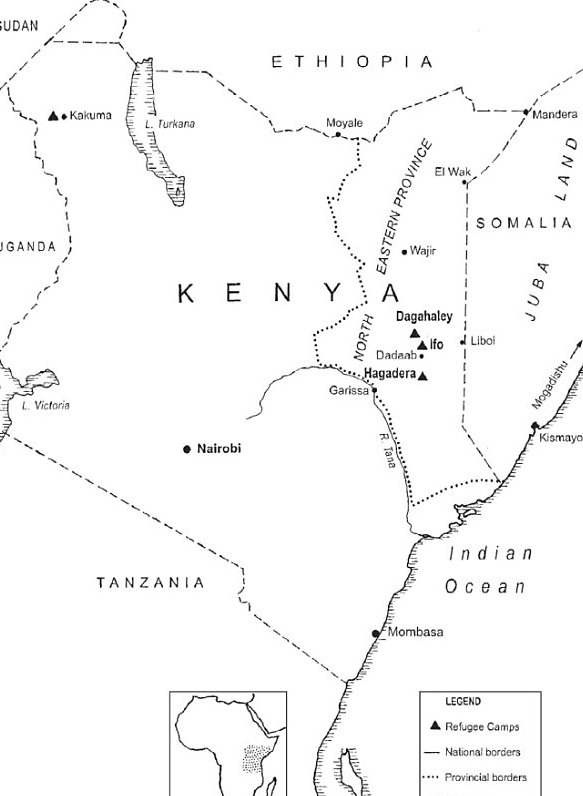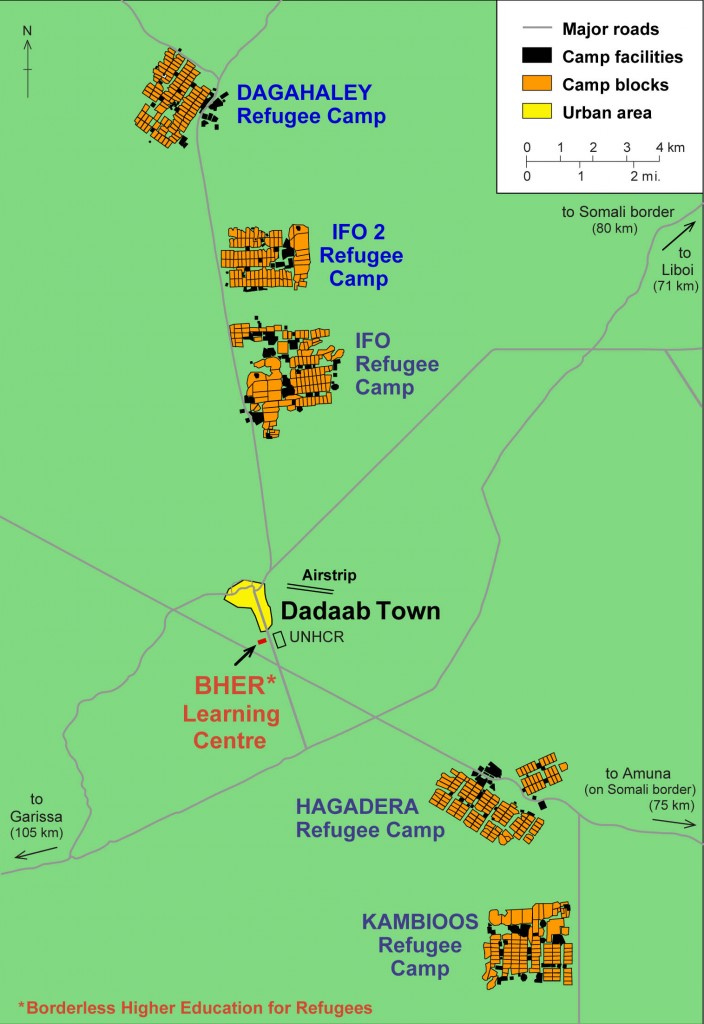
Dadaab is a town located in the semi-arid region of northeast Kenya, roughly one hundred kilometres from the Kenyan-Somali border. Surrounding the town are three refugee camps (Ifo, Hagadera, and Dagahaley) that stretch over 50 square kilometers. The vast majority of refugees come from Somalia (96%) with the remaining population hailing from Ethiopia, Sudan, and other parts of Eastern/Central Africa (4%). The camps were first established around the town by the UNHCR and the Government of Kenya in 1992 to host 90,000 refugees fleeing civil war in Somalia. Dadaab is currently host to over 210,000 refugees. At its peak, the camps expanded to host over half a million refugees. In 2011, Ifo 2 and Kambioos were established to accommodate for waves of refugees fleeing famine and drought in Somalia. These two camps were closed in 2017 following the mass relocation of non-Somali refugees to Kakuma camp in northwest Kenya. Ifo, Hagadera, and Dagahaley camp remain.
Education in Dadaab
More than half (57%) of the refugees in the camps are under 18 years of age. Unfortunately, quality education in the camps and in the Dadaab region as a whole is limited. Those who can pursue an education are often limited to elementary school, face overcrowding, scarce access to materials and sanitation facilities, and poor instruction in many cases by teachers with insufficient training (see Teachers in displacement: learning from Dadaab). While some schools are staffed by nationally-certified Kenyan teachers, the majority of teachers are refugees themselves who have received only elementary or secondary education. Around 62% of school-aged children in Dadaab attend elementary school. Of those who complete elementary, only about a quarter move on to attend secondary school.
University education in Dadaab is even more fraught. Save for BHER, there are no tertiary education programs operating within the Dadaab camps. Low national test scores in the northeast region coupled with the high cost of tertiary programs make it nearly impossible for the majority of refugee (and local) students to qualify for Kenyan university degree programs. The only access to university-level education afforded to people living in the camps is select scholarships facilitated by various NGOs that are limited to the few top-performing young men and women. The scholarships are a great benefit to students, but they remove them from the camps and region and relocate them to universities in major Kenyan cities or abroad, a system that takes the brightest away from their own communities. The vast majority of students who do not earn top grades are unable to apply. Those with familial obligations and older students (25+) are also left out of these opportunities. In addition to the systemic limitation of access to education, the chronic instability of camp life, the constant threat of camp closure and relocation, scant resources, harsh environment, and violent military activity of Al-Shabaab along the border exacerbate the challenges to quality learning in the region.
These barriers are particularly acute for women. Chronic violence, economic/cultural patterns of disenfranchisement, limited prior access to primary and secondary education all conspire to keep women out of tertiary teacher education programs, and thus out of schools and national education systems. This in turn only perpetuates the historical cycle of their exclusion. BHER seeks to overcome this cycle of exclusion through a targeted admissions process that aims to enroll 40% women and set them up for academic success through scaffolding and mentorship in the blended (online and face-to-face) Certificate, Diploma, and Degree programs offered in situ. The BHER Project seeks to meet all students where they are in their studies.


